Map
by Ezra Zeitler, University of Nebraska-Lincoln
Foreign Born Czech Population in Nebraska 1870 1950 - pictures
Ancestors
Historical census data identify several distinct areas containing dominant ethnic populations throughout the United States, and an analysis of contemporary populations identify Nebraska as home of the highest concentration of persons claiming Czech ancestry in the nation. Czechs homesteading in Nebraska left a culturally unique imprint on the physical and social landscape that remains today and a journey into the enclaves reveal these customs.
In a region of the United States where small towns are experiencing tremendous population loss, the cohesiveness and pride in Czech communities counters this trend. Very few small towns in Nebraska are able to support either a bakery or meat market, yet both are found in the towns of Wilber and Clarkson. In recent years, it has become popular for small towns containing an ethnic majority to attempt to capitalize on their heritage by promoting their culture to tourists. Many of these towns celebrate a veneer heritage, meaning that only one weekend a year is devoted to their heritage. This is not the case in many Nebraska Czech communities, where a few customs, distinctively Czech, have been retained and are a part of daily life.
Immigration
Czechs who settled in Nebraska during the latter half of the nineteenth century hailed from areas of central Europe known as Bohemia and Moravia, today regions of the Czech Republic, in the Austro-Hungarian Empire. Economic depression, as well as political and religious oppression by the Catholic Church, drove thousands to emigrate from their homelands in search of freedom. Exact numbers of Czech immigrants is difficult to assess before 1870, as this was the first United States census including Bohemia as a place of origin. Extracting figures from the Census of 1910 is very difficult, as Bohemians were counted as being members of the Austro-Hungarian Empire, and between 1920 and 1980 the term Czechoslovakian was used, which included persons of both the Czech and Slovak ethnic groups. When the Velvet Revolution peacefully overtook the Socialist government in 1989 and the Czech Republic became officially organized in 1992, Czechs had finally gained political control over their homeland.
The Homestead Act of 1854 beckoned both Moravians and Bohemians, more of the former, to settle in Nebraska and soon thereafter was home to more foreign-born Czech farmers than any state in the Union . Original Czech settlers arrived to Nebraska via Wisconsin, and once they became established, sent for family and friends in the homeland to join them on the prairie. By 1870, several distinct Bohemian enclaves had been established in eastern Nebraskas Douglas, Saunders and Saline Counties (Fig. 1). In the following decades, thousands of Czech immigrants settled in Nebraska, and in 1900 ranked third behind Germans and Swedes as the most numerous foreign-born immigrant group in the state. Areas of Czech settlement in 1900 included the core of primary settlement in east central Nebraska to communities in the north and settlements in the central part of the state (Fig. 2). As quota laws slowed the wave of immigration during the second decade of the twentieth century, the influx of foreign-born Czechs all but ceased, thus putting to an end the brief period in history which Bohemians settled in Nebraska. These pioneers and their traditions represent the seed of a culture that continues to flourish today.
Contemporary Czech Communities
Vast changes in Nebraskas population occurred during the twentieth century, the depopulation of rural counties having arguably the most significant impact. Most small towns, which the state is largely composed of, saw their population peak in 1920, as the Great Depression and drought that ensued drove many from farms and small communities to larger cities in search of employment. Farm mechanization and decreasing commodity prices, which led to farm abandonment and consolidation, played a significant role in the depopulation of rural Nebraska. Despite this, Czech enclaves established in the 1870s survived and reflect the groups resilience and successful adaptation to an unfamiliar and unpredictable environment. The twenty-first decennial census of 1990 identifies five counties, all in the eastern portion of the state, where over 25% of the inhabitants claim Czech ancestry. Colfax and Butler Counties, where 44% and 42% of the citizens claim this ancestry respectively, exhibit unbelievably high numbers, numbers comparable only to German-Russians in south central North Dakota and Germans everywhere else on the plains (Fig. 4). These percentages are largely due to rural isolation and contribute to the retention of Czech culture.
In order to gain a more precise understanding of where Czech settlements in southeast Nebraska are located, data were examined for each town, identified as a place by the census. This process, which identifies places where 15% of the residents claimed Czech ancestry, clearly distinguishes the locations of Czech ethnic islands in this part of Nebraska (Fig. 5). It is within these communities that the remainder of this study is focused.
Cultural Imprints on the Landscape
While passing through these communities, a person may see business and street signs that identify the ancestry of the local population. However, the roots of the Czech culture go much deeper than this.
Churches and Cemeteries
The steeples of churches in Czech communities, often featuring . turrets at the base of the steeple reflecting a style common in the homeland, rival the water tower and grain elevator for dominance of the skyline. Many Catholic churches in Czech communities are named after Czech saints, St. Wenceslaus being the most common (Figure 11). Czech-American cemeteries are similar regardless of religious affiliation.
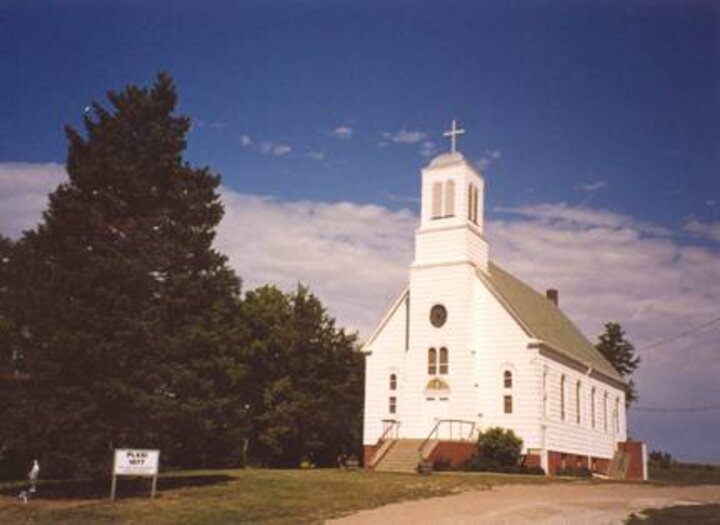
To enter most cemeteries one must pass through an aged but maintained decorative iron gate (Figure 6). The use of family plots, with a central tombstone surrounded by vaults capping the graves of family members, is very common and is distinct from other ethnic cemeteries in Nebraska. Until the 1920's most graves were inscribed in Czech. This practice ceased due to a loss of language retention and pro-American/anti-immigration sentiment in the United States at the time.
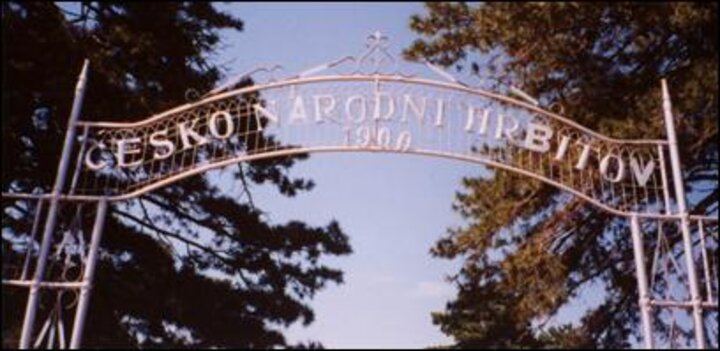
Ethnic Architecture
Buildings with a familiar style to those in the homeland were constructed in the strikingly different landscape in which the Czechs settled. Most identifiable is the baroque style, which is most commonly found on buildings that served a public function in the past or remain to do so today (Figure 7, Exeter warehouse). Other subtle styles or patterns, such as L-shaped homes and white or beige colored exteriors may be common in Czech communities but are not culturally distinct.
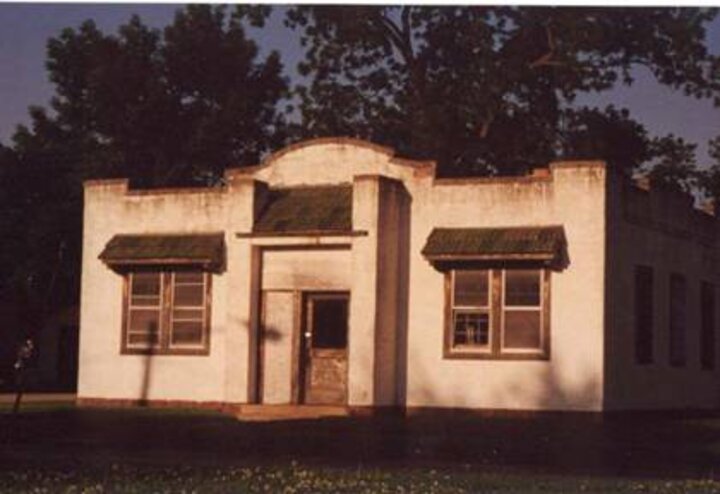
Community Halls
The desire to congregate was great with all parties who settled on the vast and empty plains, the Czechs being no different. Organizations such as Sokols and the Zapadni Cesko-Bratrska Jedota (ZCBJ) were formed, and when funds were available a building was constructed (Figure 11). These halls hosted various community activities, from plays to dinners, and although many local chapters of the organizations have folded, their building remains. The majority of the halls have a brick exterior, are two stories in height and feature a short rectangular-shaped false façade on the front (Figure 8, Crete sokol). Other halls may have a one story wooden exterior that has been painted white (Figure 9, Tabor ZCBJ). While some of these community halls may remain in use for gymnastic classes, high school reunions, wedding receptions, dinner parties and dances, others have been abandoned, only to remain as a testament to the organization, its members, and a community proud to call the building its own.
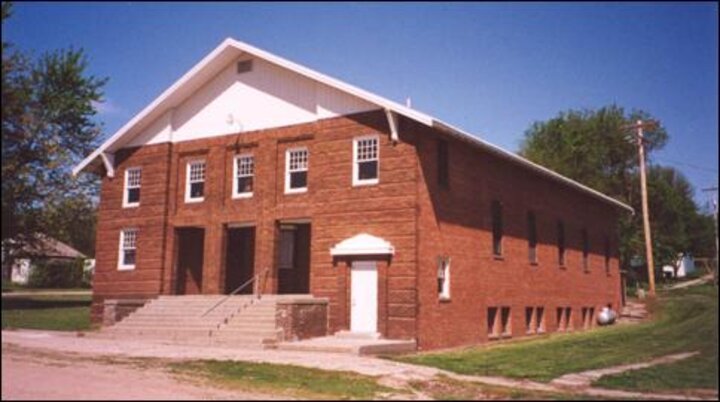
Cuisine
Ethnic cuisine has played a significant role in the preservation of the Czech heritage. Local grocery stores maintain a steady supply of fruit fillings for kolache, a wide selection of pork products, many varieties of kraut and caraway seed, used to bake bread, in bulk. Duck is popular during the Thanksgiving/Christmas holiday season, and when describing its price reduction at various times throughout the year and the crowds that follow, a grocery store employee claimed, Its crazy. With the evolution of the grocery store expanding selection to offer food of all types, stores dedicated solely to the production of meats and baked goods are becoming rare, especially in small towns. It is then remarkable to see bakeries and meat markets that offer Czech delicacies and standard American products operating in towns such as Milligan (population 350), Brainard (pop. 350), Clarkson (pop. 700) and Wilber, the state and national Czech Capital (pop. 1,500). The fact that these businesses are able to be successful in such small villages attests to the residents love for specialized meat and baked goods. Included in Figure 11 are locations of bakeries producing kolache and other Czech goods and meat markets which produce meats such as jaternice and jelita. Another trait of Czech communities are the Friday fish frys, offering walleye, perch, cod and halibut at local taverns and restaurants. The roots of this tradition originated with the Catholic observation of Lent, as one could not consume red meat on Friday. When this tradition became a customary weekly event throughout the year is unknown, but the Friday fish fry remains a distinct quality of Nebraskas Czech enclaves with a Catholic population.
Music
The admiration of polka music in Czech enclaves is undeniable. Polka music is heard from loudspeakers on Wilbers streets, jukeboxes in taverns and live at Friday fish frys, wedding receptions, weekly dances and town festivals (Figure 10). There are currently six radio stations, all in eastern Nebraska, which feature a daily or weekly dose of the beloved music that serves a vital role in the preservation of Czech culture (Figure 11).
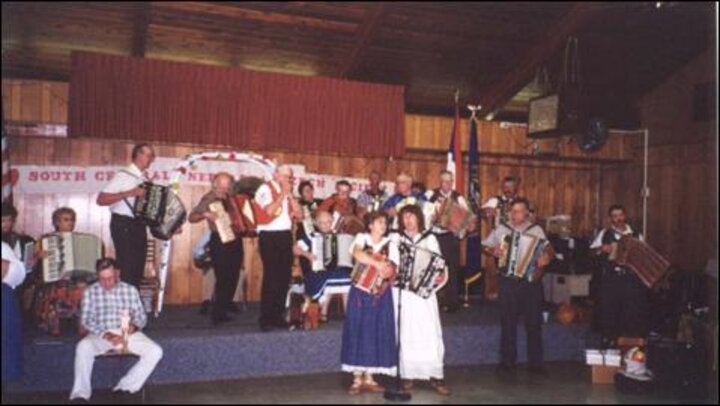
Language
The preservation of a cultures language can be vital to the preservation to the culture itself. The low retention of the Czech language in Nebraskas Czech communities reflect other rural ethnic enclaves in the United States. Granted, Czech may still be heard on the streets and in businesses, but it will not be long before the language will only be heard in local nursing homes, as only people in their sixties and older are able to speak fluently. Members of younger generations may only know phrases, if any Czech at all. Although this is somewhat of a hinderance, the decreasing number of persons fluent in Czech does not take away the proud heritage and active preservation in Nebraskas Czech enclaves.
Conclusion
The twentieth century saw vast changes in American culture. A decline of Old World traditions was caused by the evolution of technology, which provided a means of mass communication and transportation. The World Wars encouraged the abandonment of ethnic traditions and the Americanization of the population also contributed to the loss of ethnic heritage.
Aspects of the culture such as language are diminishing with the passing of the generations; Czech is commonly heard at nursing homes such as the Wilber Care Center , where second and third generations of Czech-Americans reside. However, the percentage of persons able to speak Czech drops significantly by the fifth generation, as is the case with most ethnic groups.
Although much has been lost, some culturally distinct aspects remain on the landscape in Czech communities. In a sense, the rural isolation of these communities in the southeast Nebraska has contributed to the preservation of the culture. At the dawn of the twenty-first century, Czech cuisine and music traditions remain strong while the community buildings that were constructed nearly 100 years ago (a long time for America ) continue to be utilized. In conclusion, the Czech community in Nebraska remains strong.